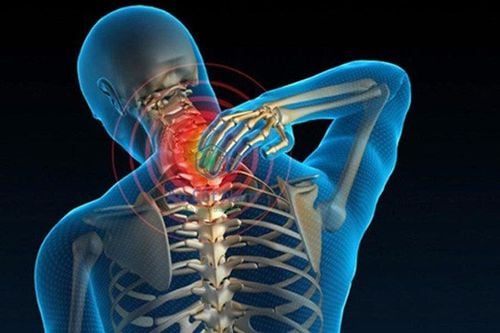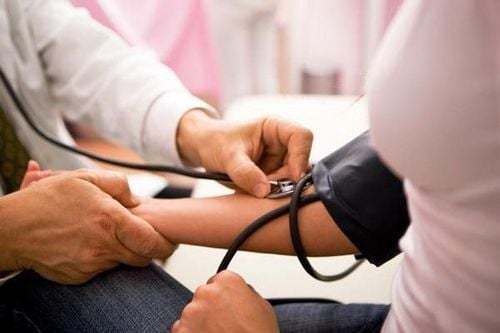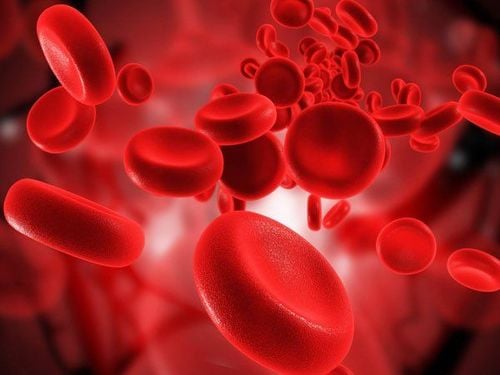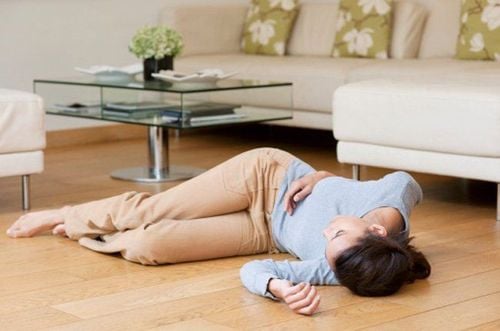This is an automatically translated article.
Cervical spondylosis is a dangerous disease. If not treated in time, it will cause many dangerous complications including vestibular disorders.
1. What is cervical spondylosis?
Cervical spine consists of 7 vertebrae from C1 to C7. Between the two vertebrae from C2 down there are intervertebral discs. Each disc is composed of a mucous nucleus, an fibrous ring, and a cartilage plate, with a height of 3mm, equal to 2/5 of the height of the vertebral body.
Around the vertebrae there are ligaments, tendons and muscles attached. Cervical spine disc is the main part to connect the vertebrae. The cartilaginous plate is attached to the vertebral body by a layer of calcium with many small holes that nourish the disc (in a diffuse manner) and protect the bone from being pressed by the mucinous nucleus, protecting the disc from being damaged. infection from the bone.

Thoái hóa cột sống cổ là một căn bệnh liên quan trực tiếp đến các đốt sống cổ
The mucus nucleus moves when the spine moves and has the effect of damping when there is a force on the vertebrae. Cervical spondylosis is inflammation and calcium deposition in the longitudinal ligaments of the neck, narrowing the orifices of the nerve roots, and manifests itself clinically. The compression of the nerve roots and spinal cord can also lead to herniation of the disc nuclei inserted into the spinal cord, causing complications, even dangerous complications.
Cervical spondylosis is a disease directly related to the cervical vertebrae with many different causes and usually occurs at the age of 55 and older.
2. Cervical spondylosis causes vestibular disorders
If cervical spondylosis is not treated promptly and properly, it can easily lead to many dangerous complications. Among them, vestibular disorders are the most common complications.
The vestibule is a part located behind the cochlea, responsible for maintaining the balance of body activities. Vestibular disorder is a condition in which damage to the vestibular area causes the body to lose its ability to control balance. So how are cervical spondylosis and vestibular disorders related? Severe cervical spondylosis compresses blood vessels and nerve roots, causing the brain not to have enough blood supply, causing cerebral ischemia, leading to vestibular disorders. Patients experience the following symptoms:
Severe neck pain Headache, dizziness lasting from a few minutes to several hours Tinnitus, nausea, vomiting when standing up or sitting down Loss of balance, disorientation space when changing posture

Người bệnh sẽ mất khả năng thăng bằng, mất định hướng về không gian khi thay đổi tư thế khi thoái hóa đốt sống cổ ở mức độ nặng
Unsteady walking, easy to fall Loss of concentration at work Fatigue, poor sleep, anxiety, depression These symptoms often recur, greatly affecting the patient's activities and quality of life .
3. How to treat and prevent?
Principles of treating cervical spondylosis, when it is still at a mild level, it is necessary to rest, relax, combine with safe physical therapy (avoid harsh physical therapy that makes the disease worse). In addition, pain relievers, muscle relaxants (oral, topical, topical), nerve-enhancing drugs or B vitamins, or acupuncture can relieve pain (with an experienced doctor).
What treatment method, what drug needs to be consulted by a medical doctor, preferably a neurologist, a rheumatologist, especially a patient should not self-treat with drugs when there are no indications. doctor's prescription. Should not twist, shake, rotate the neck when the cervical vertebrae have degenerated, especially when there is a herniated disc. Need to pillow with a pillow of moderate height, very comfortable (not too high, not too low. soft). In order for the blood to circulate, it is necessary to change the sleeping position.
In daily life, avoid excessive heavy labor, limit standing and sitting for too long (between hours should have a break to exercise the body). When suspecting or showing signs of cervical spondylosis, it is necessary to seek medical attention as soon as possible to have a timely remedy and treatment. , health and longevity.

Trong cuộc sống hàng ngày tránh lao động nặng quá mức cần thiết, hạn chế đứng, ngồi quá lâu
In addition, you also need to follow a calcium-rich diet (shrimp, crab, snail, drink milk with calcium...) to avoid osteoporosis, avoid joint degeneration and should eat more vegetables and fruits to supplement all kinds of foods. necessary micronutrients, including vitamins of group B. Should exercise the body gently, regularly, in the right way to circulate blood.
Especially when you notice abnormal signs, you should go to medical facilities for medical examination and treatment.
Department of Neurology - Vinmec Times City International General Hospital is one of the prestigious and effective medical facilities specializing in examination and treatment of diseases related to the central nervous system.
Experienced medical team such as Assoc. Prof. Dr. Chu Hoang Van, Doctor Vu Dung Kien with expertise in the examination and treatment of diseases related to the central nervous system (cranial, meningeal, brain) , blood vessels in the brain, nerves in the skull, pituitary gland, spine, discs, spinal cord) and peripheral nervous system (nerves and ganglia outside the brain and spinal cord).
Please dial HOTLINE for more information or register for an appointment HERE. Download MyVinmec app to make appointments faster and to manage your bookings easily.













